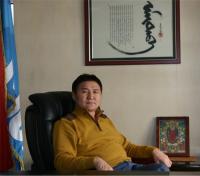Энэ 7 хоногт
Mongolian health sector in difficulties
As Mongolia was about to participate to the international event “1000 cities – 1000 lives”, promoting healthier cities and citizens, more than 2,500 doctors and medical staff demonstrated Thursday demanding the doubling of their monthly salaries

As Mongolia was about to participate to the international event “1000 cities – 1000 lives”, promoting healthier cities and citizens, more than 2,500 doctors and medical staff demonstrated Thursday demanding the doubling of their monthly salaries.
The protestors, who were all affiliated to the labour union of Mongolian health workers, included medical staffs from regional hospitals too.
After Health Minister S. Lambaa received the formal demand for a salary raise this Friday, a meeting gathering 10 representatives from the Ministry and the Labour Union was organized and a promise to settle the issue this week was made.
As a matter of fact, Mongolian medical staffs works long hours in poor condition while being underpaid, reflecting the difficult situation the Mongolian health sector is in.
Recently, the State Central Clinic, which offers all kinds of medical services to patients from 18 provinces and Ulaanbaatar, has joined the list of hospitals in trouble
The clinic is now overrun after four of the five departments of a 400-bed hospital located nearby were declared unsafe by the Professional Monitoring Agency and a decision was made on March 22 to relocate patients and divert future ones to the State Central Clinic.
This logically resulted in a sharp increase in the number of patients being appointed to the Central Clinic, which lacks the necessary facilities to accommodate them.
Unfortunately, little planning was made before the move, leading to several problems staff wise. As it is, the hospital employs 760 people, despite there being provision for only 630 in the budget.
Meanwhile, the clinic’s growing number of patients raises fear of infections breakouts and hospital workers have reported a number of pick pocketing as unscrupulous characters are taking advantage of the confusion and the daily presence of more than 1,000 people in the hospital.
The Director, L. Jambaljav, seems to have difficulties in finding the MNT10 billion necessary to demolish the old hospital and build a new one with better and greater capacities.
The hospital has eight private pharmacies, 10 private clinics and several cafeterias. Doctors and nurses have not been paid any incentive or over-time allowance for more than a year now. The last state hospital was built in 1980.






